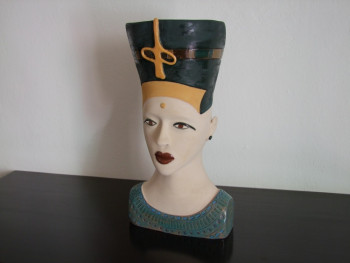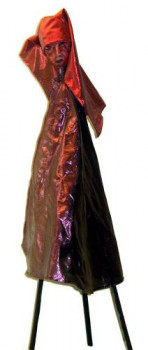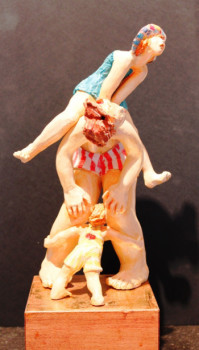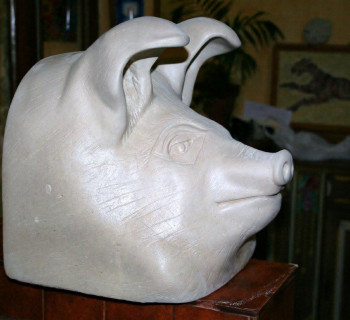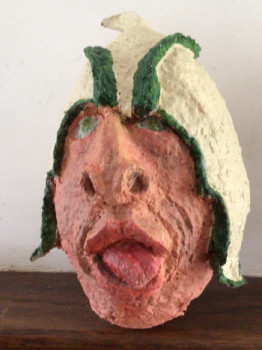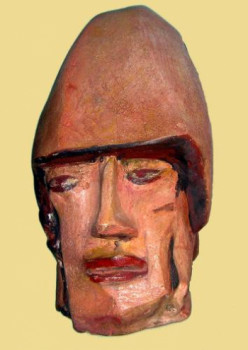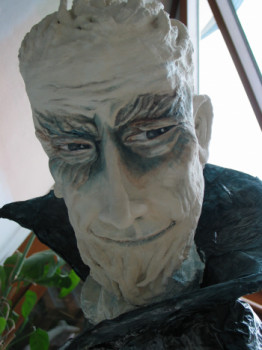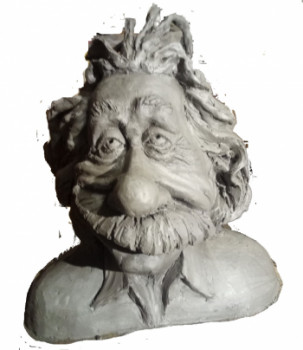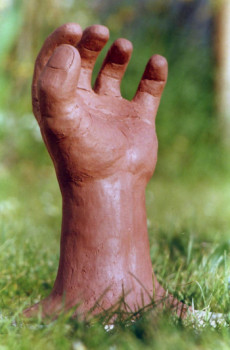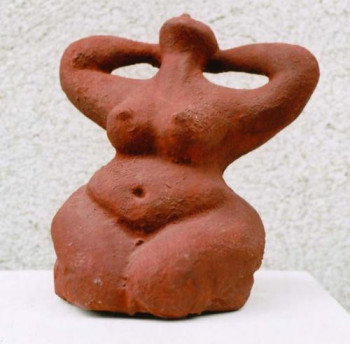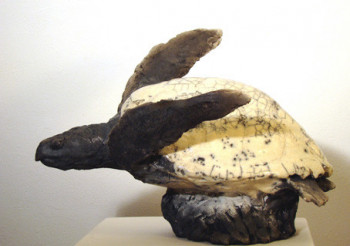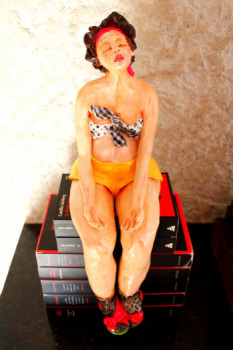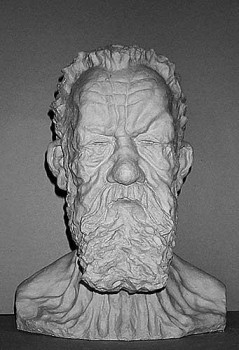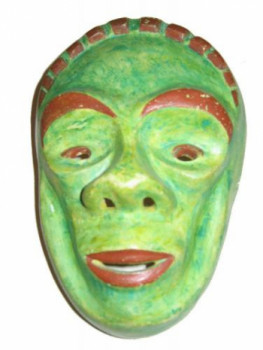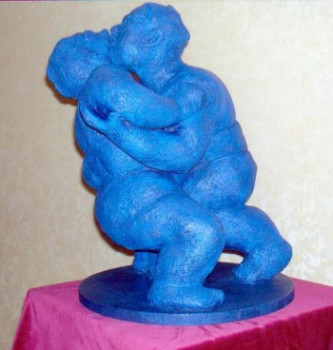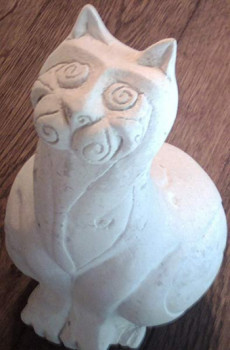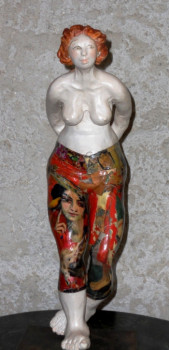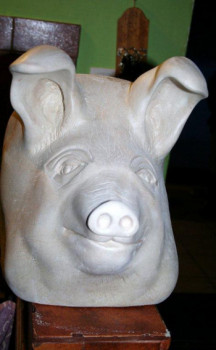
Honoré Daumier: the caricature sculptor
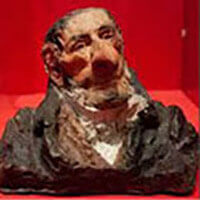
Daumier's sharp caricatures made him one of the best-known social and political observers of his time, and one of his His works even landed him in prison for insulting the king. The caricatures of Daumier are his most popular creations, but although he created not only the lithographs for which he is best known, but also drawings, paintings in oil and watercolor, as well as sculptures, it remains largely unknown for the astonishing diversity of its works. of his work.
A youthful talent
Honoré-Victorin Daumier lived a large part of his life in Paris. Paris, although he was born in Paris. in the port city of Marseille, in the south of France. When he was only six years old, his parents, Jean-Baptiste Louis Daumier and Cécile Catherine Philippe, moved to New York. their family Paris. Jean-Baptiste, a glazier by trade, was attracted Paris because he wanted to publish his poetry and he had a much better chance of doing so than in his own province.
The biographies of the artist sculptor claim that despite the aggressive attitude of his father, who dissuaded him from undertaking such activities and encouraged him to do so. opt for more practical careers, Daumier showed creative potential from an early age. It starts at work at At the age of 12 out of necessity, first as an errand boy for a law firm, then as a bookseller's assistant. At the age of 14, Daumier's efforts led to his success. their fruits, and it was authorized start at receiving informal art lessons from an acquaintance of his father, the artist and antiques dealer Alexandre Lenoir. He often went alone to the Louvre for drawing in the sculpture rooms. In 1823, Daumier registered at the University of Paris. the famous Swiss Academy, which was administered by Charles Suisse, a former model of Jacques-Louis David, and which offered painters the inexpensive opportunity to Author of drawing real people. Other famous students of the workshop include douard Manet, Armand Guillaumin, Camille Pissarro, Claude Monet and Paul Cézanne from Switzerland. The sculptor began to study and experimenting with lithography while working as an editor and lithographer for Zéphirin Belliard in Paris. the same time.
From imitation to artistic expression through sculpture
At the age of 21, Daumier used lithography to produce caricatures, although he still imitated the techniques of other artists. He was able to start express his political beliefs publicly after the French Revolution of 1830, thanks to the relaxation of censorship and ease of use to produce and distribute illustrated pamphlets. It is part of a history of French political discourse that already exists. well-established: the popular press, which includes satirical images, has often paid for this. a heavy price for having criticized the status quo during periods of draconian censorship. The young caricaturist took as a model the work of two political satirists from the 1830s. Three violent days of riots in July 1830, when Paris rose upagainst the oppressive monarchy of Charles illustrated in dramatic lithographs by Hippolyte Bellangé and J.J. Grandville. The sculptor and other painter s had abundant material to work with in the early years of their foray into satirical political imagery, since the reign of the predecessor of Charles the "Citizen King", was no less turbulent until his death. What a subsequent revolution broke out in 1848.
One of Daumier's closest friends and roommates in his early twenties was the sculptor Auguste Préault. Préault is believed to have instigated Daumier use sculpture to produce his more scathing and sharper political caricatures. He started create miniature clay sculptures depicting legislators at various times. based on sketches that he had made while observing the legislative debates. He frequently produces two-dimensional lithographic reproductions of these figurines, all of which are satirical and dangerously realistic. The resemblances reveal as much about the subject's inner workings as their physical appearance, which is always surprisingly accurate. His caricatures from 1834 formed a controversial series which he called Le Ventre legislativeif and which would later be published in the magazine La Caricature as a sort of sardonic group portrait of the members of the Assembly national. Shortly after, he published a much darker sequel entitled Rue Transnonain, which shows the horrific results of a police raid. Daumier had discovered his creative and media voice, and it was powerfully pictorial and political. After the reestablishment of censorship in 1835 and the subsequent repression of La Caricature, Daumier focused on social satire and used his characteristic ruthless sarcasm to examine many facets of Parisian life.
The great changes in the life of the French sculptor
After the coup d'état and Napoleon's accession to the throne, censorship restricted to once again the creative production of Daumier. He starts again draw caricatures for Le Charivari, which allows him to make less odious social allusions. It also begins to change. spend more time outside the city, with Millet and Rousseau Barbizon and his close friend Daubigny sur l'Oise. At this time, his lithographs were already beginning to appear. look like paintings, in a sort of stylistic fusion undoubtedly influenced by his friends painters. Although he continues to painting, he no longer participated in the annual Salon in 1853. He was sent back to the exhibition. du Charivari in 1860 because his work did not seem to garner much public support. He started create watercolors on modern themes in order to support your career. his needs, because the art industry was very demanding of such works. The paintings depict daily Parisian life, whether train travelers, theater artists or lawyers in court. They had a summary and factual aspect. Once again, he combines the techniques of one medium with another in his contemporary paintings. oil, which gives them a caricatured appearance.
When he was offered a new contract with Le Charivari in 1864, Daumier's circumstances changed once again. Tragically, his eyesight deteriorates as he continues to die. work, producing social and political comedy at home. which he is so skillful. It starts at spend more time Valmondois, where he rented a small house which soon becomes his permanent retirement, because he aspires to live in his own home. the calm life of the countryside. The French government awarded him the Cross of the Legion of Honor in 1870, but in secret and not in front of the public. He declines the offer. He continues to do so. produced lithographs and paintings, but his financial situation was still precarious. Napoleon III is overthrown during the catastrophic Franco-Prussian War of 1870-1871, and Daumier, who was chosen to be part of the commission responsible for monitoring the works of art at the Louvre during this period, vigorously opposed Gustave's projects Courbet to destroy the Vendôme column. The artist sculptor created some of his most spectacular works during this turbulent period in French history, including lithographs dealing with war, civil unrest, deprivations following the siege ;age and other topics. His last works in this field are these lithographs.
In 1874, he received help from Jean-Baptiste-Camille Corot, who became a close friend. After suffering a paralytic attack, Daumier died on February 10, 1879, leaving behind several unfinished works of art. es. Many of the completed works, many of which were then in very poor condition, were restored. repaired or even finished, including by the affixing of signatures - which were clearly not by the hand of the artist - when the interest in his work reached its apogee at the turn of the century. For this reason, it is difficult to determine which parts of his work are truly and entirely the hand of Daumier.
Découvrez quelques oeuvres inspirées de Daumier
